DS 9 Review: Big, Comfy, But Not Quite Weird Enough
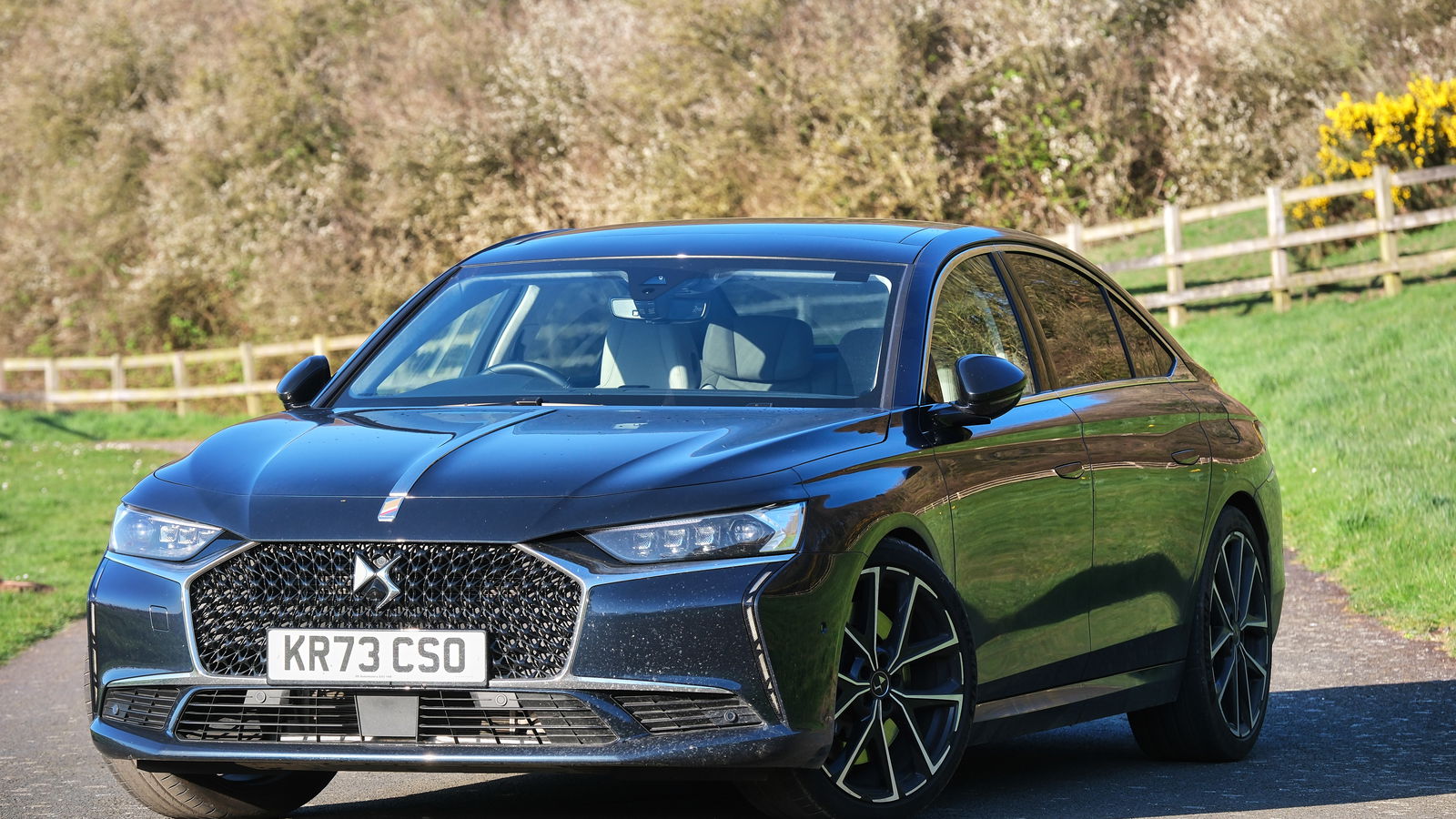
Pros
- Fantastic interior design and qualitySuperb comfort and refinement
Cons
- Mightily expensiveSlightly confused personality
Okay, hands up: did you even know the DS 9 was available in the UK? It’s such a footnote in the British car market that when you Google its name sans space, the first results aren’t about the car but Star Trek: Deep Space Nine.
After all, it’s a big French saloon car (albeit one built in China), and even in the days when saloons were big business, the big French ones were always sluggish sellers. Now, in the days of crossover domination, you’re left wondering why DS – Citroen’s posh sub-brand – has bothered.
Still, bother it has since 2021, and here’s the 9 in mid-ranking Opera trim, with the top E-Tense 360 4x4 powertrain. It’s a four-wheel drive plug-in hybrid setup, with a 1.6-litre turbocharged petrol four-cylinder and one electric motor driving the front wheels, and a second e-motor powering the rears. Making a combined peak of 354bhp and 384lb ft of torque, it’s the same setup as the equally rare and related Peugeot 508 PSE.
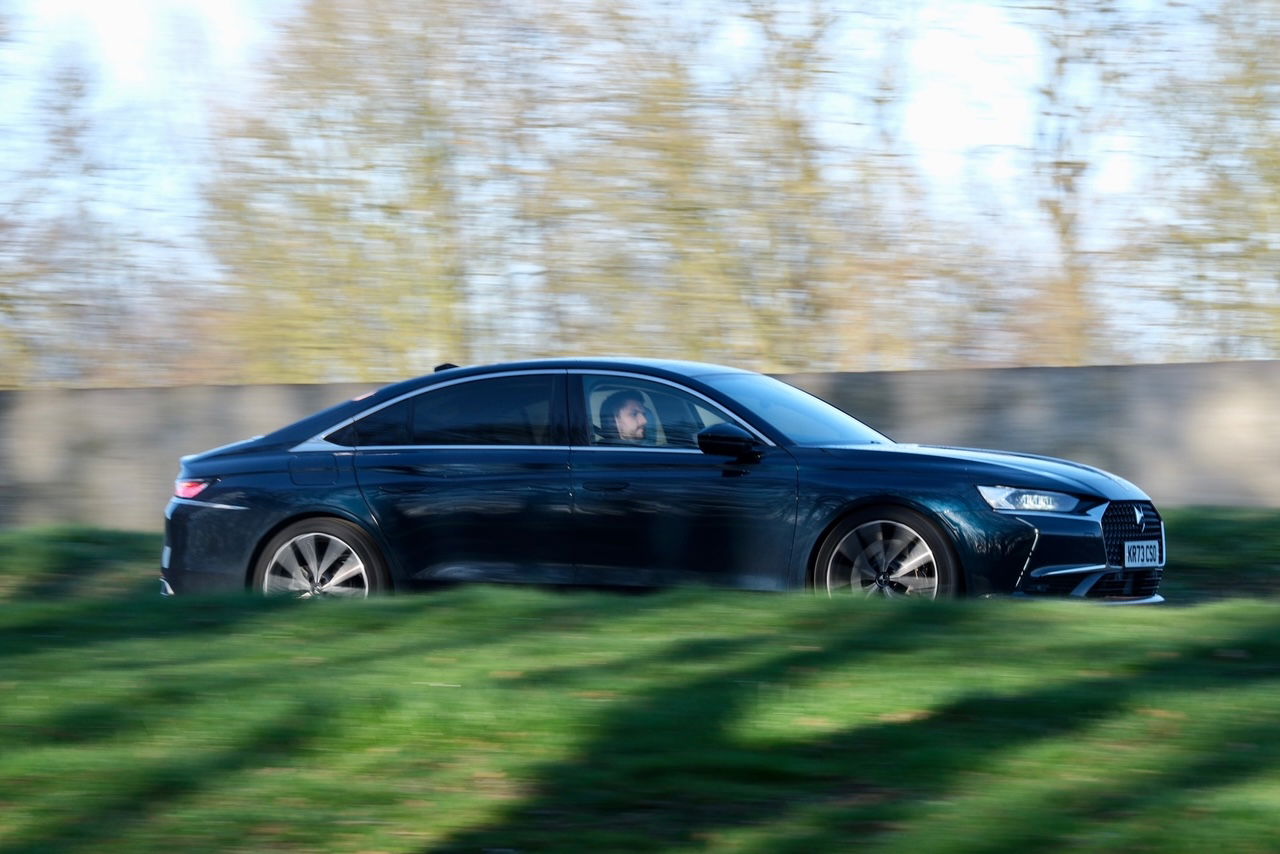
On the surface, the DS 9 doesn’t quite seem to know what it wants to be. You look at it and assume it’ll be an effortless, cushiony wafter just like its forebears from Citroen. What, then, is it doing on a set of Pilot Sport 4 tyres, with massive ‘DS Performance’ badged brake calipers? Is this some kind of sports saloon?
No, it’s not. Don’t be fooled by the power, the 5.6-second 0-62mph run, or the odd flashes of red and gold that nod to DS’s Formula E effort. A BMW 5-series-style driver's saloon this isn’t. Rather, it’s something to relax in, although it’s not flawless in this department, either.
The exterior has presence, perhaps because of the 9’s rarity, but the interior is the centrepiece. It’s a wonderful place to be: the crystal-like switches; the ‘watch-strap’ upholstery pattern; the quality of the materials. It’s set apart by little theatrical flourishes, like the analogue B.R.M. clock that slowly rotates out of the dash when you start the car.
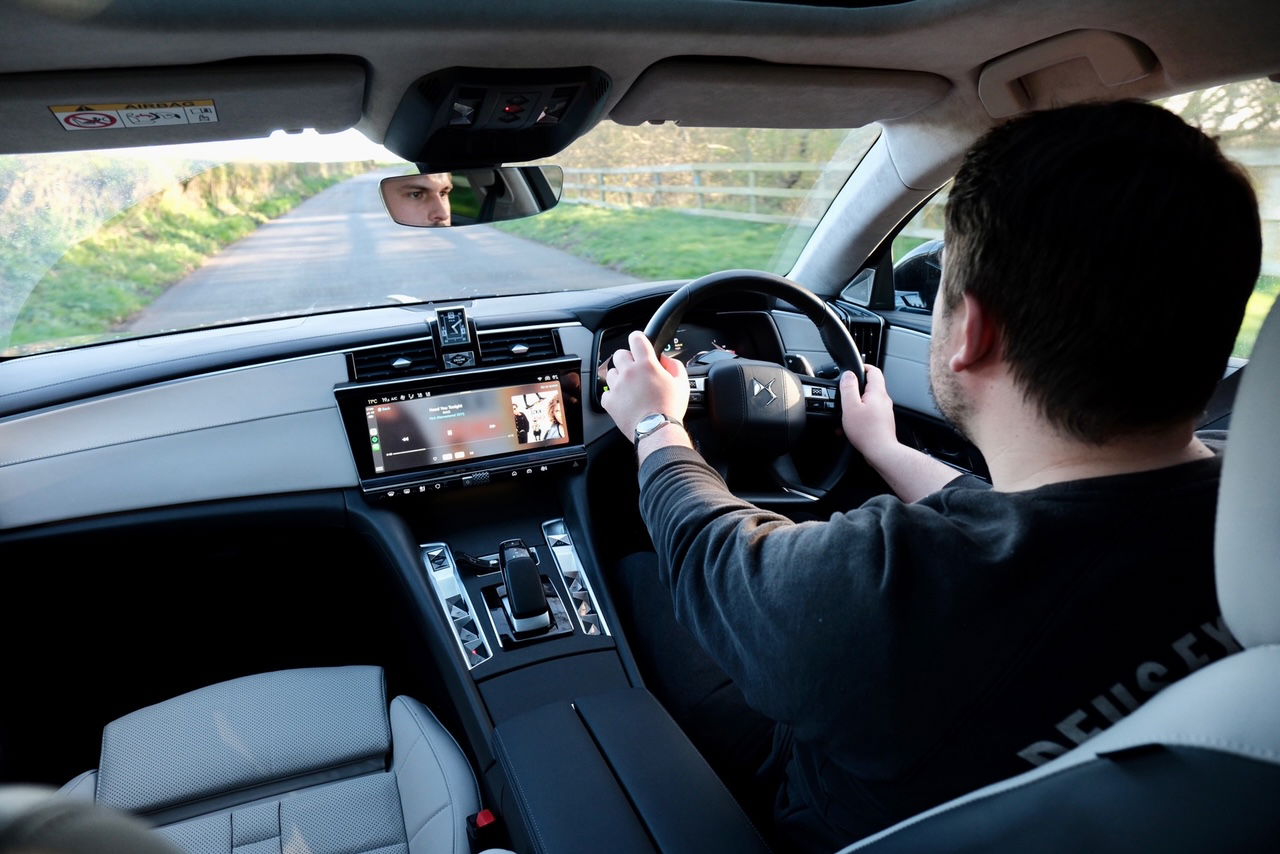
The beautiful seats are a little firmer than you might expect, but are hugely supportive and have a deeply relaxing massage function. You sit nice and low, although tall-ish drivers may need to crank the seat a couple of notches higher than they like to be in comfortable reach of the wheel and pedals.
The infotainment can frustrate. The 12-inch touchscreen is sometimes laggy, and far too many functions, including climate adjustment, are buried within it rather than operated physically. Please stop this, car companies. You do at least get a set of capacitive shortcut buttons to take you straight to certain menus, as well as a hard key to switch off the dreaded lane-keep assist.
DS has also beaten Volkswagen to the punch in incorporating ChatGPT into its cars, through its ‘Iris’ voice assistant. Say ‘okay Iris’ and you can ask it pretty much anything, which is helpful if you suddenly want to know the population of Cleveland, Ohio as you drive along.
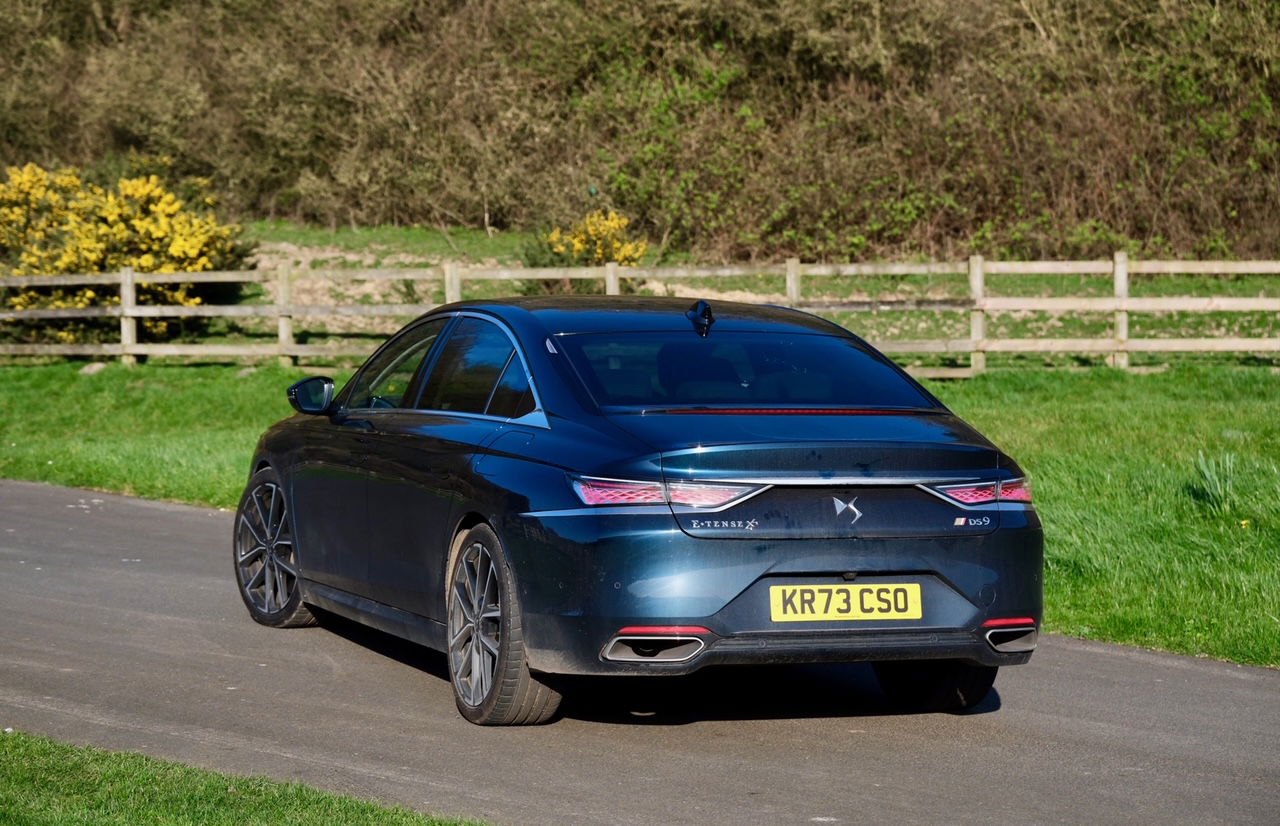
The driving experience is equally relaxed if again showing hints of the 9’s somewhat confused personality. The powertrain is mightily smooth, the transition between electric motors and the engine barely noticeable. The two blend seamlessly on the move, and gearchanges are handled delicately. It’s only the occasionally jerky transition between physical brakes and electric regen where you notice the interplay between the two power elements.
The engine only really pipes up under hard acceleration, and all-round refinement is excellent. The only mark against it is the tyre roar from the 20-inch rims on rough surfaces.
After a week of running around on mostly the engine alone, the 9 managed MPG in the mid-40s. With a fully charged battery, you’ll probably get around 20 miles of all-electric range – the quoted 38 miles is ambitious.
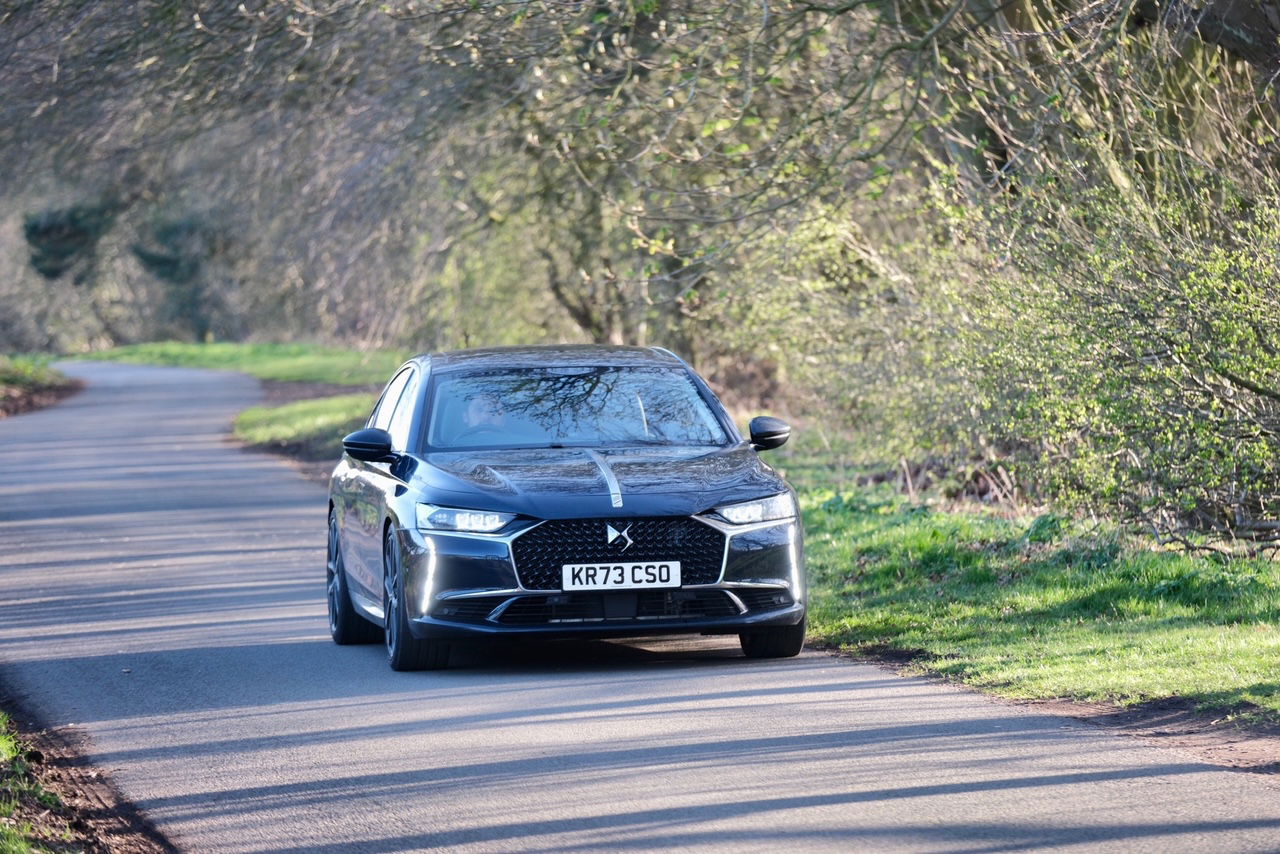
Big Citroens of old usually had the brand’s silken hydropneumatic suspension. In the DS 9, its role is supposedly filled by ‘Active Scan Suspension,’ which activates when you pop the car into Comfort mode. It uses a camera and array of sensors to scan the road ahead for imperfections and actively and independently prepares each corner of the car for them.
Most of the time, it works seamlessly, but the worst ruts and holes still send an almighty thud through the car, which sometimes struggles to hide its bulky 1909kg mass. It’s also a shame it’s only available in Comfort mode, in which the 9 is reluctant to downshift.
There’s a Sport mode that sharpens throttle response, weights up steering and downshifts sooner. It’s a largely token inclusion unless you’re overtaking, as are the gearshift paddles. Get your foot down, though, and assuming you’ve got charge in the battery, you’ll be surprised at how quickly the 354bhp 9 surges forth with the engine and motor working together.
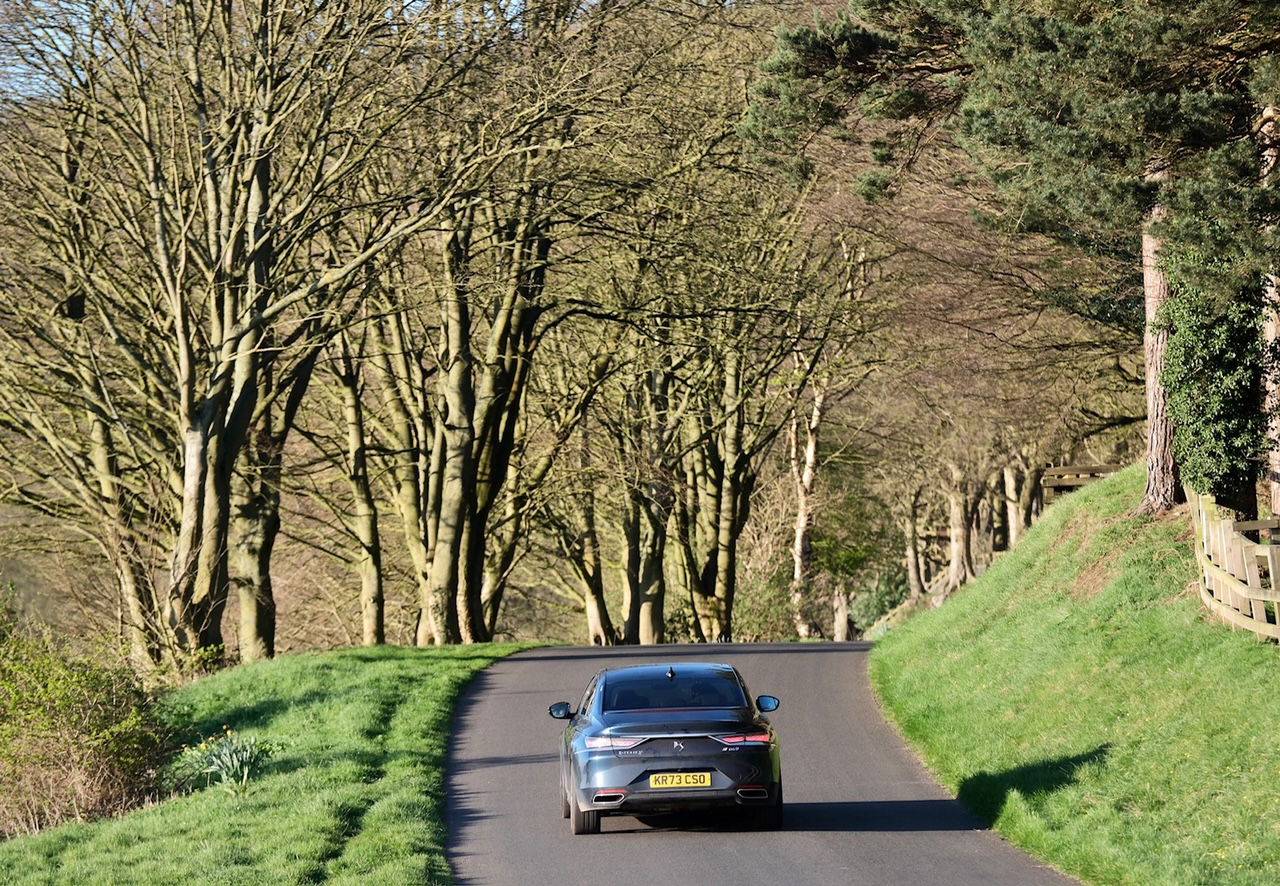
Around town, the steering is effortlessly light and though basically devoid of feel, it’s accurate and decently weighted on open, flowing roads. Body roll is kept impressively in check, too, but this still shouldn’t be mistaken for a sporty car.
DS is bold to even offer the 9 in the UK in the first place, although presumably, the French embassy couldn’t ferry diplomats around in baggy Renault Vel Satises forever. Anyone who does buy one can bask in the knowledge that they have something massively exclusive and more characterful than most rivals, with one of the very best interiors on anything sub £100k. It’s not too far below that, mind – this combo of trim and powertrain starts at an astonishing £70,415. Factoring in typical French exec depreciation, this may be the main reason nobody’s buying them.
Ultimately, the 9 lacks that last little bit of Citroen-ness (yes, we know it’s not technically a Citroen) that would put it up there with its predecessors. It’s not quite weird enough to appeal in the way the very best big French barges did in the past, but not quite conventional enough to draw people away from the obvious German choices. It’s far from a bad car, it’s just one that’s not quite sure of itself.
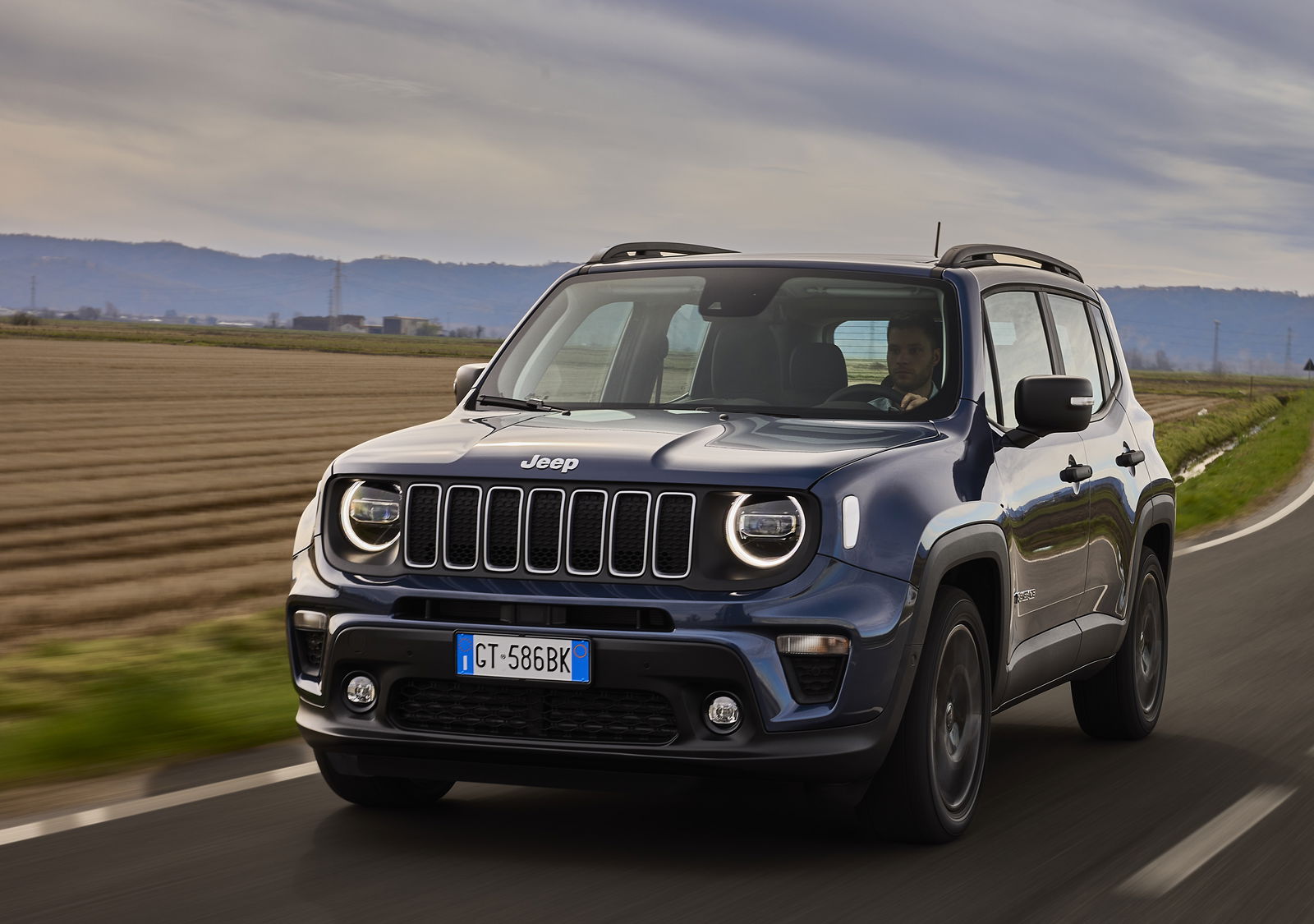
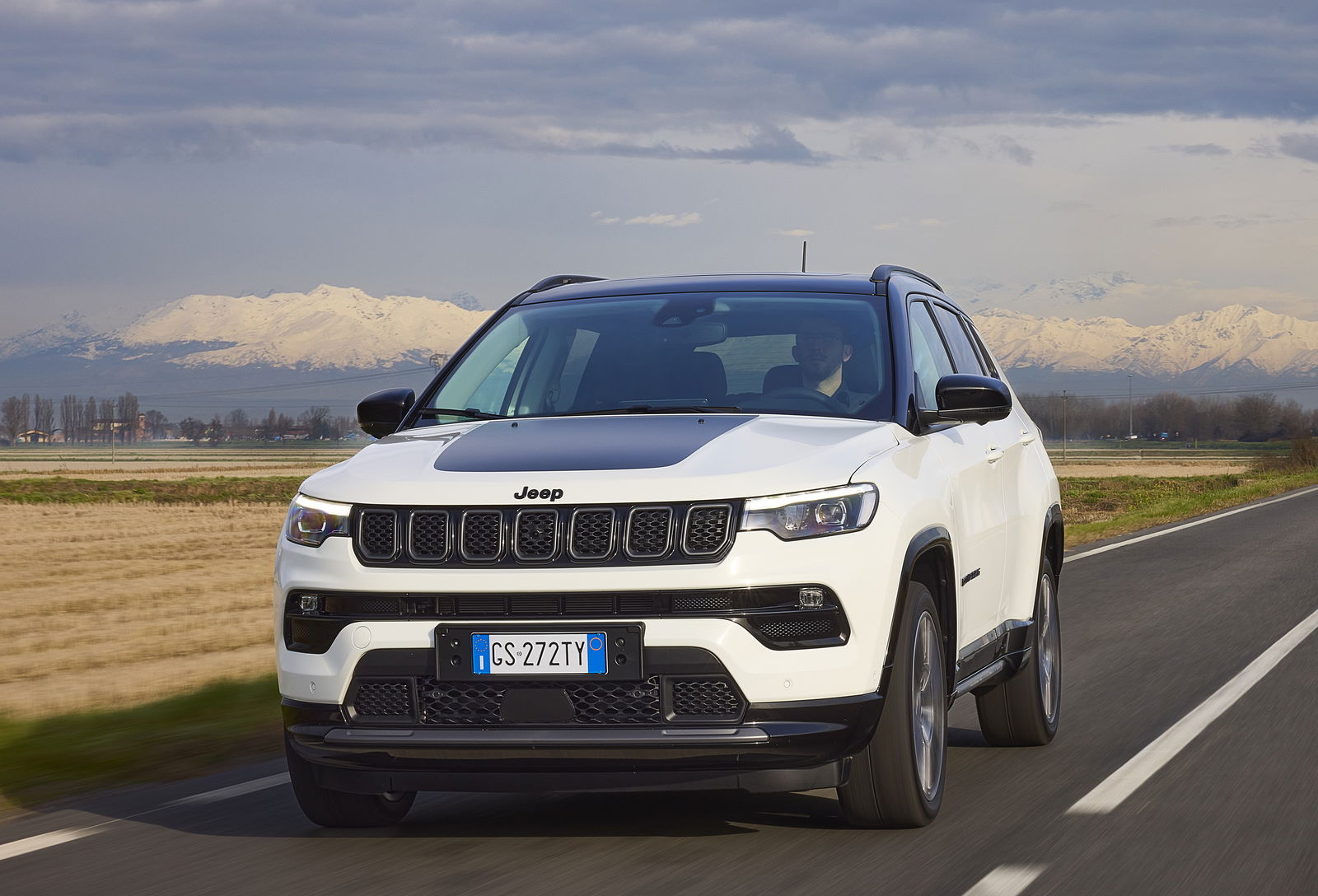

Comments